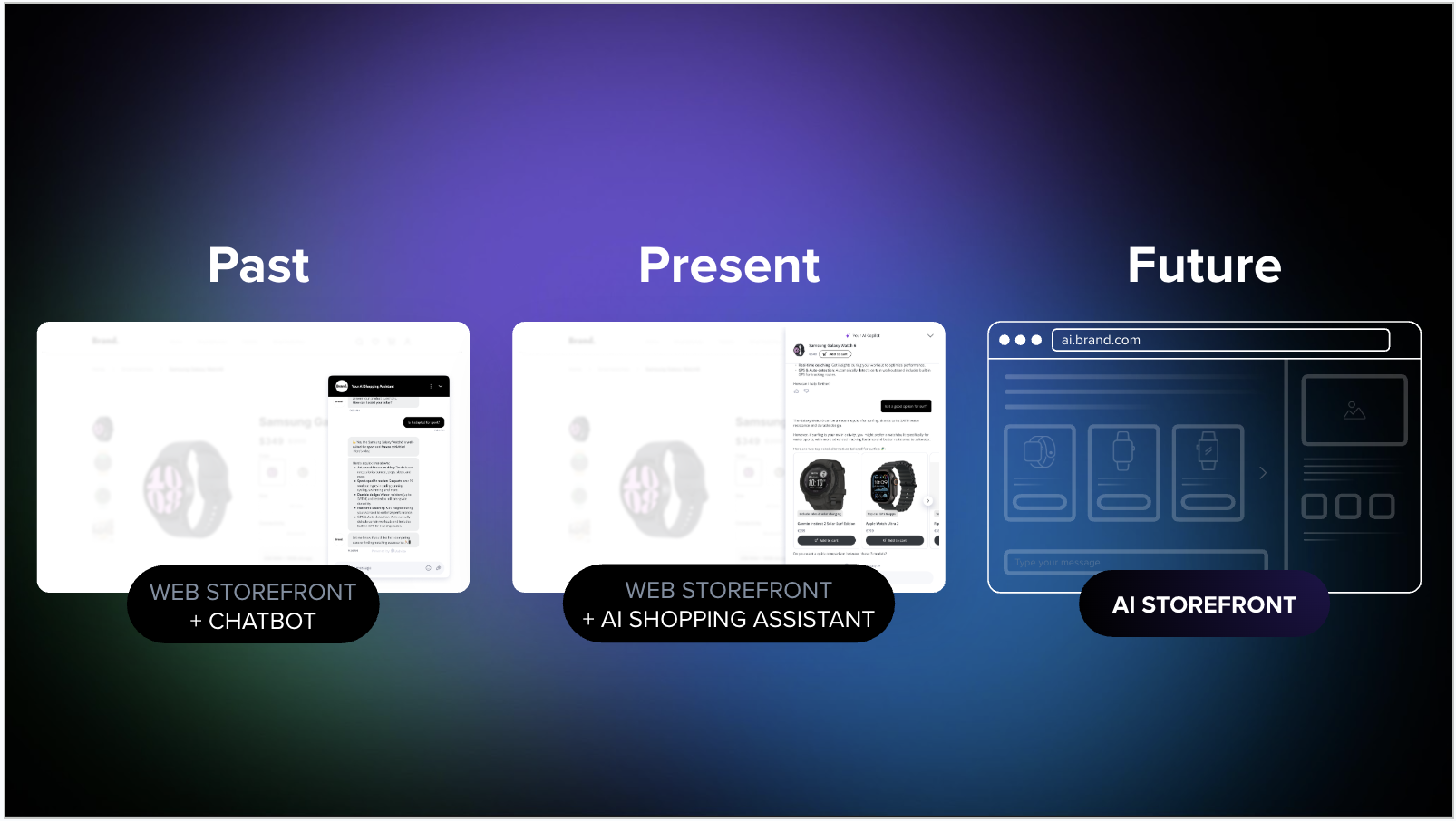Why Conversation is at the Heart of the Digital Customer Experience
iAdvize
Recent times have taught us a powerful lesson: human connections matter. As we've found ourselves turning to digital options more and more, we've felt at a distance from others. Sure, digital purchasing can be quick and efficient, but it's often impersonal too. There's no doubt that digital customer experience (CX) needs some serious attention from retailers.
Most brands know they must improve CX or risk losing customers. But digital CX isn't about providing more content or using technology to streamline transactions. Your digital experience needs to be a human experience. And human experiences are built on conversations--authentic ones between two people.
Today, people want to feel valued--and they want to feel connected to something larger than themselves. They seek to engage with brands that do more than provide reliable products at affordable prices. Instead, customers want to see your human side and for you to see them as individuals with feelings, and hopes, and dreams.
In fact, recent research has revealed that 85% of consumers say that a human touch and technology are essential for a positive customer experience:

And 80% say they'll stay loyal to brands that truly know them and to understand their needs:

The only way to truly know your customers is to talk to them. You'll discover the rich range of emotions that customers feel when they interact with your brands. As we enter a new chapter in retail, focusing on humanity, conversation, and emotion matters more than ever.
Why Every Retailer Must Focus on Customer Emotions
Yes, your brand and others have put some energy and dollars into digital CX. You likely have tools for gathering customer feedback or voice of the customer (VoC) insights. But these are typically one-to-many tools that don't help you build 1:1 relationship with customers. Often, these tools don't give you a clear perspective on the emotions behind every customer experience.
Your aggregate survey results are lagging indicators. They tell you about things that have already happened. However, they don't tell you about the moments that matter when a customer is close to making a purchase, but not yet committed.
What do customers feel when they're considering a purchase online? In many cases, their emotions aren't positive at all. They may feel overwhelmed by options and concerned about spending money. It's common for customers to wonder whether a product will suit their needs and lifestyles or worry about how to make a return if the product isn't the right fit. Even after they place an order, many customers feel overcome by intense buyer's remorse.
Our research found that half of people felt some anxieties when shopping online:
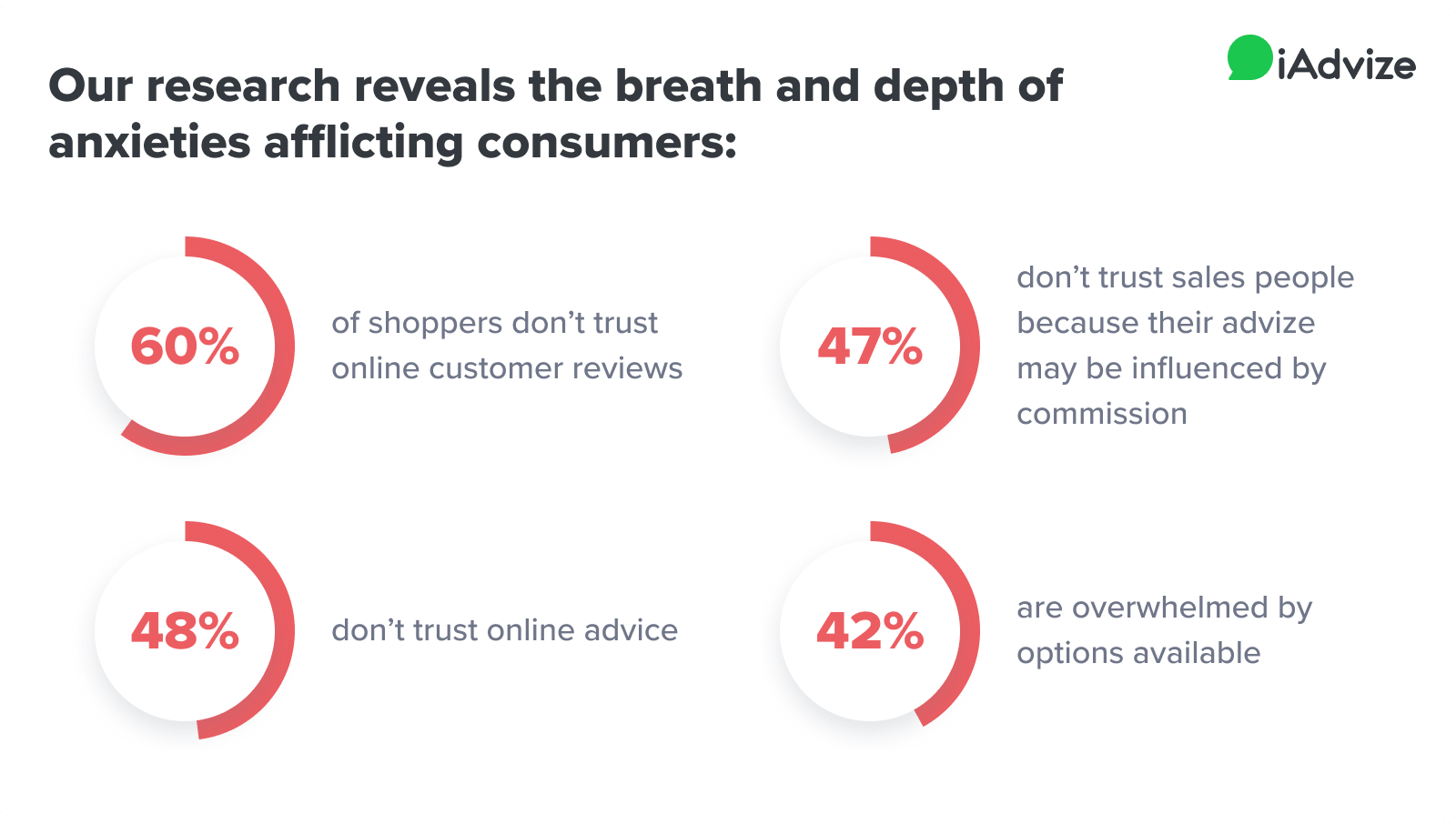
As you can imagine, difficult emotions and worries can deter customers from buying. On the flip side, positive emotions can inspire loyalty. Research from Deloitte found that 60% of customers with long-term relationships with a brand experienced positive emotions like love, trust, and happiness:
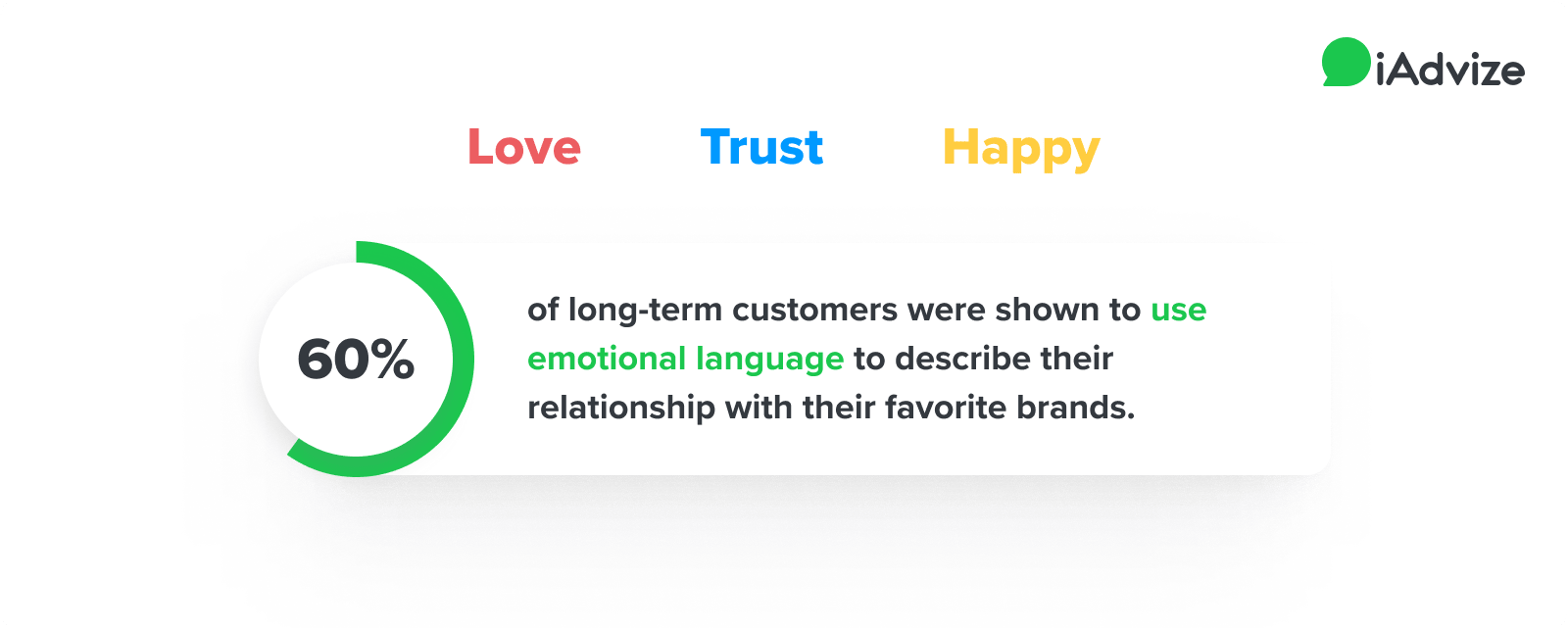
Positive emotions and long-term loyalty are more than just feel-good qualities. In fact, Cap Gemini research has shown that emotionally engaged consumers spend 70% more than their less-engaged counterparts. And they're far more likely to promote and advocate for brands that have earned their trust and loyalty:
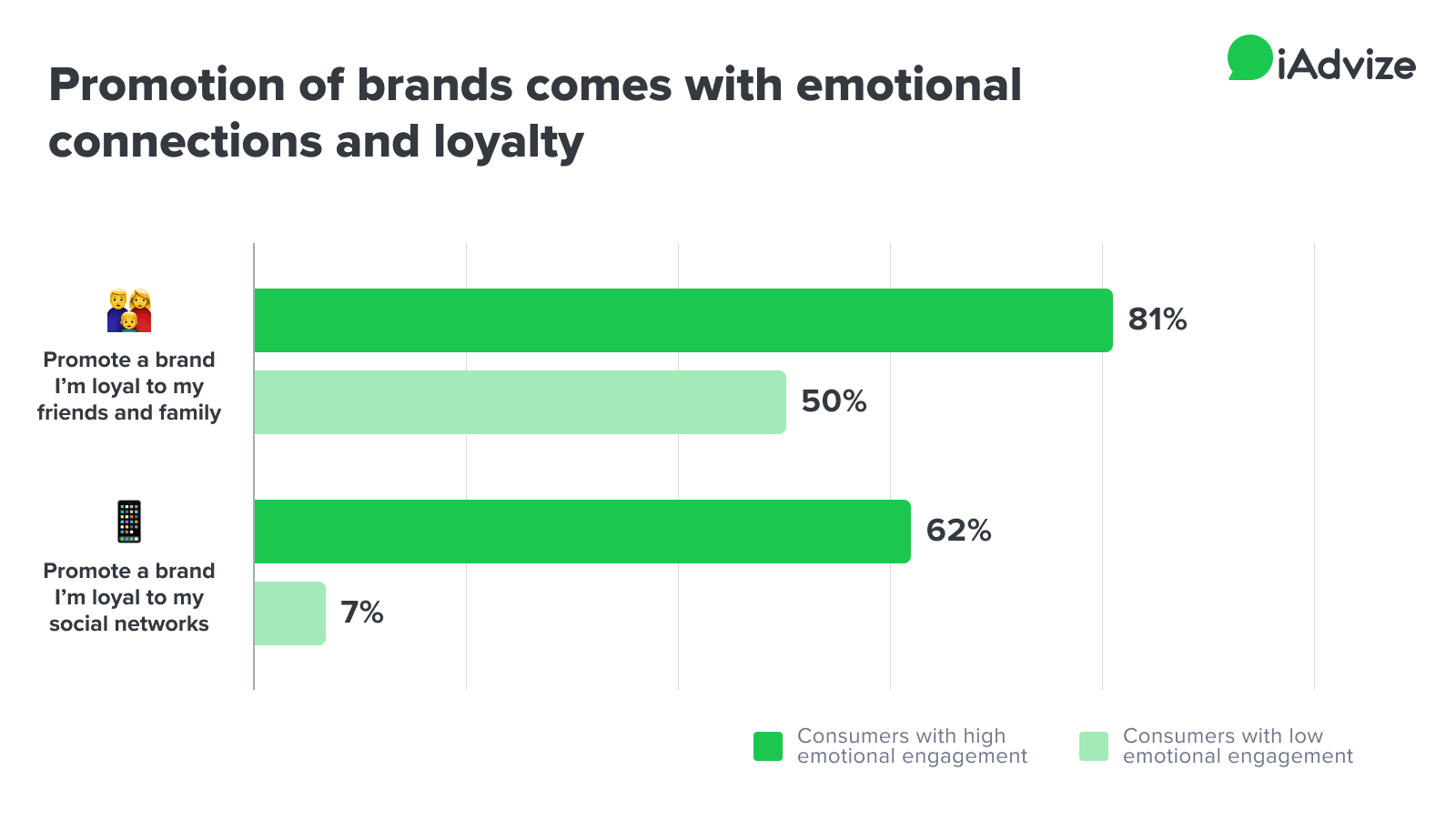
What's the bottom line? Retailers need to care about how customers feel. Each time a customer connects with your brand is an opportunity for you to inspire positive emotions. In your digital channel, that means you must provide meaningful interaction and conversation. When you do, you can reinforce a shopper's positive feelings and take steps to turn around negative experiences.
How Conversations Put You in Touch with a Range of Customer Emotions
How can you understand the emotions customers experience when they engage with your brand? There are several ways that CX experts use to define and identify customer emotions. One well-known model developed by thought leader Bruce Temkin is the Five A's of an Emotional Response. According to Temkin, customer interactions most often provoke emotions in one of five categories:
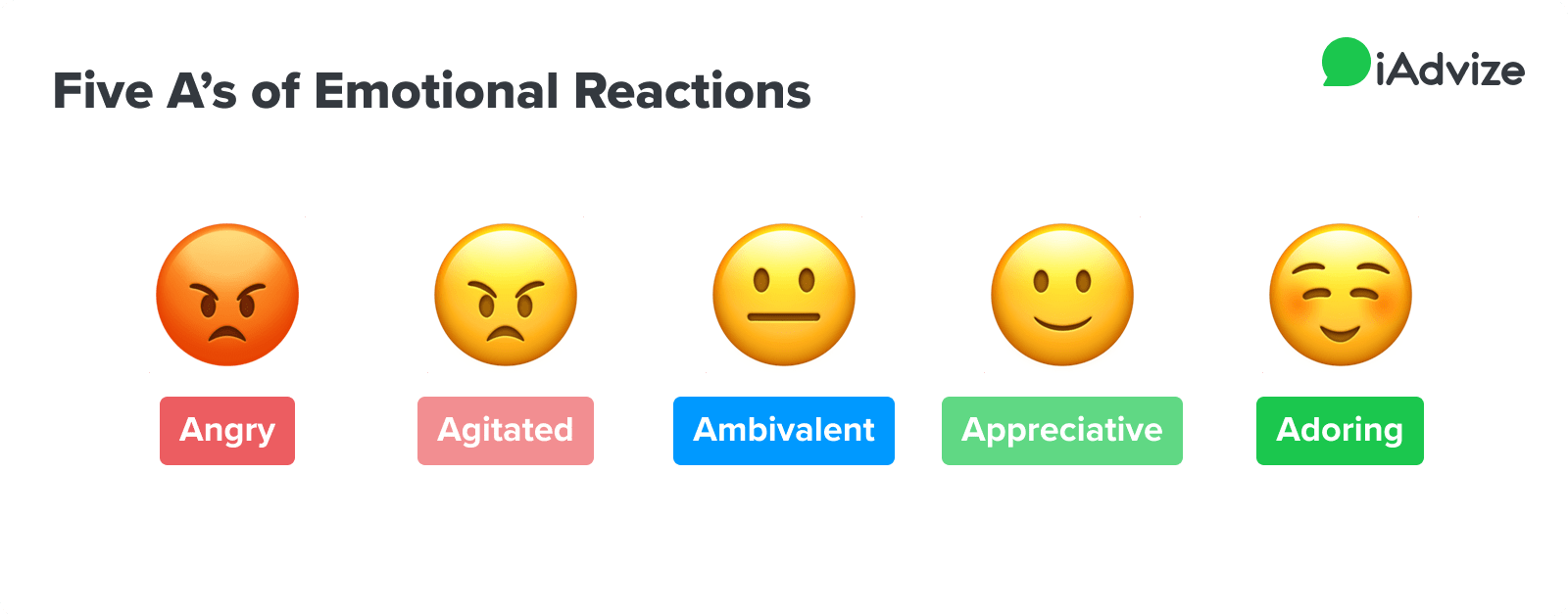
- Angry: Customers feel very upset by a situation with a brand. After experiencing anger, customers may spread negative sentiment about a brand. They also may try to avoid doing business with the brand--or potentially defect to a competitor.
- Agitated: Customers feel frustrated by an interaction. They'll likely avoid future interactions with the brand and may start looking around for alternatives.
- Ambivalent: Customers have a neutral response after an interaction. Their needs were met in a reasonable way, but nothing about the experience was especially compelling or memorable. They are neither disappointed or pleased. They're likely to remain as loyal as they were prior to the encounter.
- Appreciative: Customers feel pleased because an interaction exceeded their expectations. This scenario makes them more likely to stay loyal and do more business with the brand in the future.
- Adoring: Customers feel like a brand went above and beyond their expectations. They may have been pleasantly surprised by the high-quality of service they received. Because of this positive encounter, they're certain to remain loyal. Chances are, they'll share the positive sentiment and may even refer others to the brand. They have a high likelihood of becoming a passionate brand aficionado.
No surprise: Negative emotions drive customers away, while positive ones cultivate loyalty. But far too many brands have no idea how customers feel after an interaction.
For retailers, the primary time to solicit feedback from digital customers is after purchase. Yet, the customer has typically gone through many steps before they buy. They may have visited your site--and competitors' sites--dozens of times. During each visit, they can experience all sorts of emotions--from excitement and curiosity to frustration and fear.
With a conversational approach, you can reach customers during critical moments before they buy from you. You can get clear, honest insight on how people think and feel during their shopping journeys. Of course, people's needs are different--and that makes their experiences different. And people often bring emotions from other parts of their lives into their digital shopping experiences.
If you're truly listening and having a two-way conversation with customers, you can effectively respond to their emotions. You can address negative situations and potentially turn around. If a customer expresses positive emotions, you can deepen your bond with them.
Let's review some conversation examples that map to the "5 A's of an Emotional Response Model" to see how this can work.
Angry
This conversation addresses the concerns of a customer who is upset about needing to purchase a replacement part -- a screen protector for a phone. The brand advocate responds with understanding and gives the customer discount code.
Also, the brand advocate shares personal experiences with a screen protector product. This conversation helps the customer understand that the durability and longevity of the screen protector to help the customer feel reassured about the expense.
While this conversation doesn't remedy the issue completely, it does give the customer a chance to voice emotions and feel more confident about the purchase. This type of dialog can salvage a customer relationship that could have deteriorated and resulted in negative word-of-mouth for the brand.
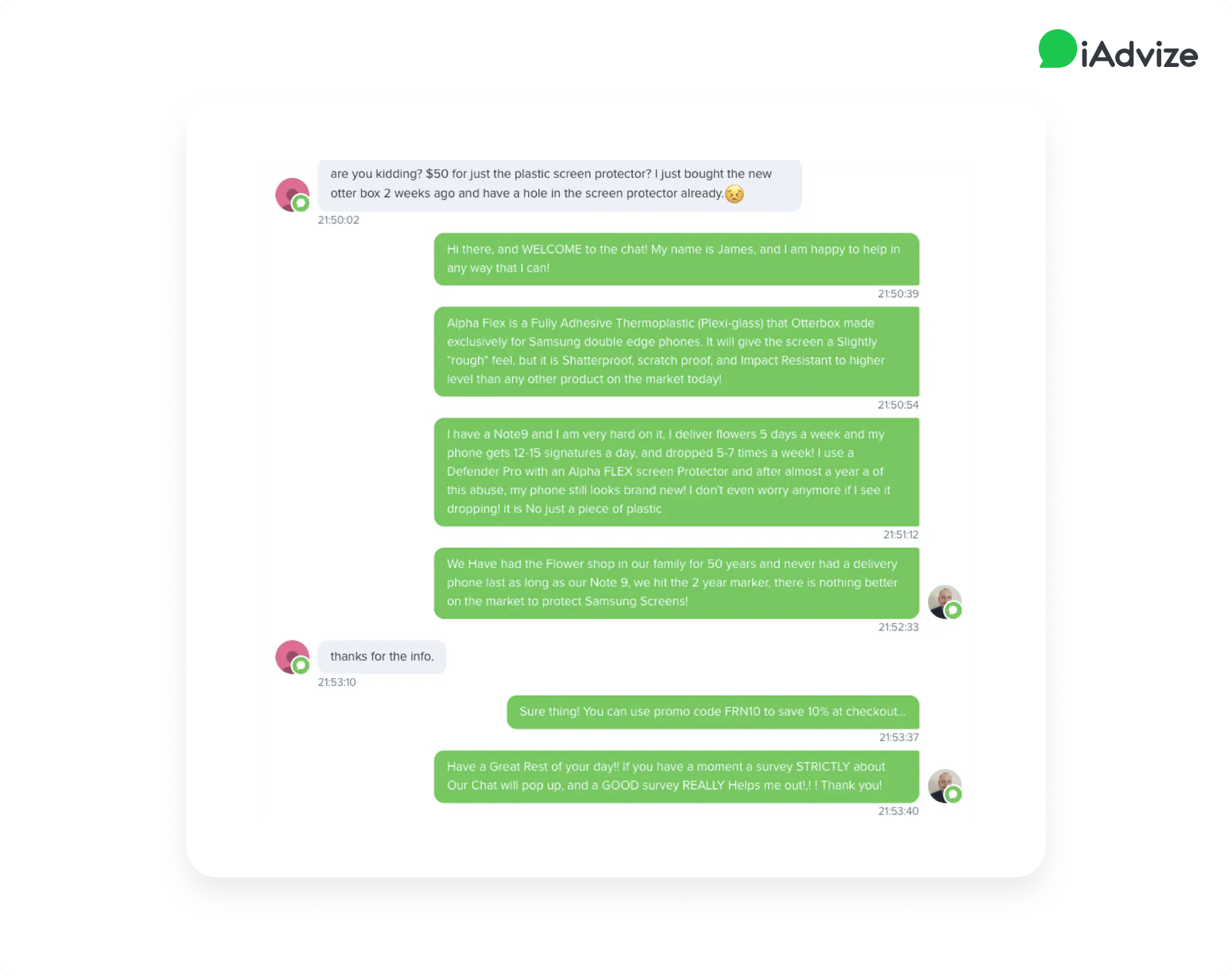
Agitated
In this conversation, a shopper is hoping to secure expedited shipping for a purchase. Unfortunately, the customer's shipping preference isn't available. The brand advocate can't do anything to fix the situation but does offer kind words to the customer.
Like the angry scenario, the brand advocate can't completely solve the shopper's problem. But responding with understanding for the shopper's concern reflects positively on the brand.

Ambivalent
This conversation shows a shopper who is focused on gathering facts instead of expressing emotions. The shopper is considering a subscription to a meal delivery service and trying to understand when meals will arrive. Since the shopper wants to plan meals for days not covered by the service, knowing arrival expectations is critical. The brand representative explains the delivery process in detail. Also, the representative explains weekly purchase quantity options to help the customer make the best selection.

Appreciative
In this conversation, a parent is shopping for a computer for a child. Since the shopper is looking for durability, the brand associate suggests looking for models with acrylic side panels. The associate also identifies a line of products that offer a range of performance and price and provides advice on compatible accessories.
The customer feels grateful for the information received and notes that the associate has been "very helpful." Thanks to this positive interaction, the customer is likely to buy from the brand and potentially return for future purchases.
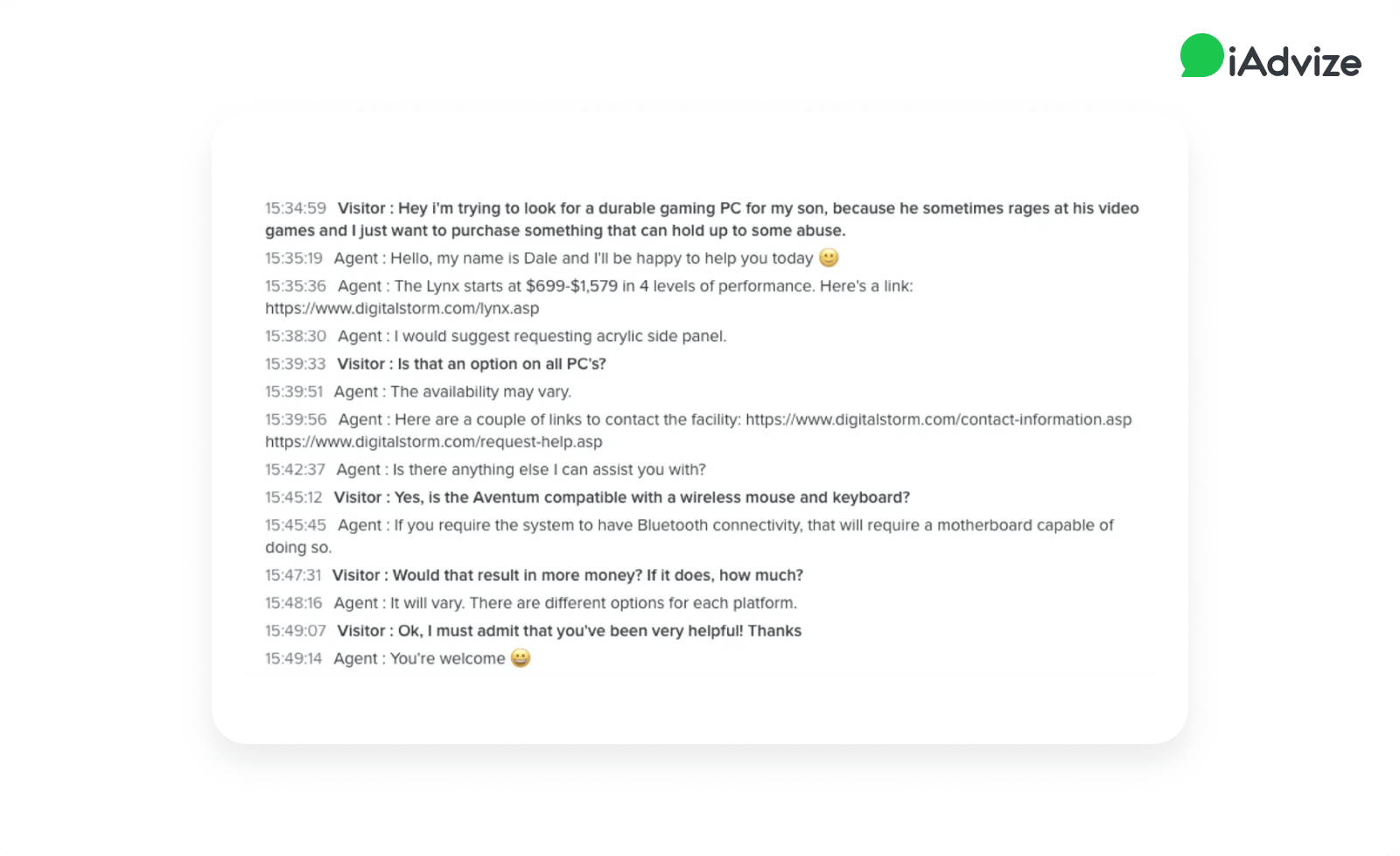
Adoring
A husband shopping for a gift for his wife initiates a conversation with a brand associate for assistance in selecting the right size. The associate responds quickly and provides sizing alternatives. Although the husband had some idea about the best size for his wife, he feels reassured by the expert advice.
He notes she has several dresses from the company and says he's certain that he'll buy again since his wife loves the brand's clothing. It's clear that this shopper and his wife are brand loyalists--and will return to repurchase. After receiving fast and friendly service via a 1:1 conversation, the husband is more likely to share positive sentiment about the brand with others.
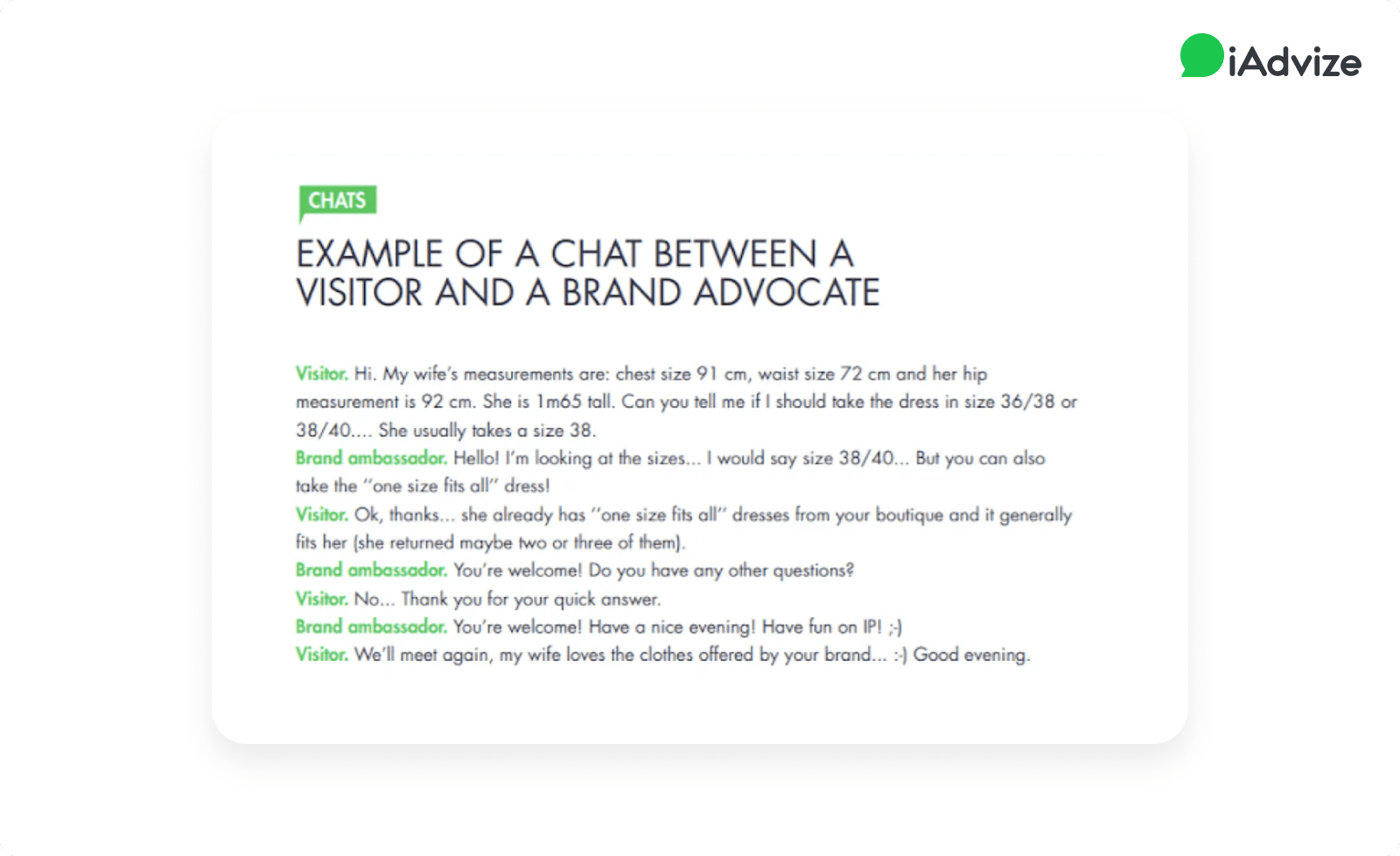
Emotions Matter in Digital Customer Experience
We're all consumers. And we all can name times when we had positive and negative experiences with a brand.
Think about how those experiences shape your ongoing perceptions and loyalty. Did you ever order something online that far exceeded your expectations? You're likely to keep doing business with that brand and share good words about the company with others.
Have you ever returned a defective product and hit roadblocks when reaching out for support? You're likely to end the relationship and never think of buying from that brand again.
Cultivating positive sentiment and loyalty isn't a one-time endeavor. According to research from Deloitte, rational thinking often brings us to consider a brand for the first time. But emotions are what cause us to stay loyal and turn into brand advocates. By curating consistent positive touch points that foster positive emotions, retailers can keep strengthening bonds with customers.
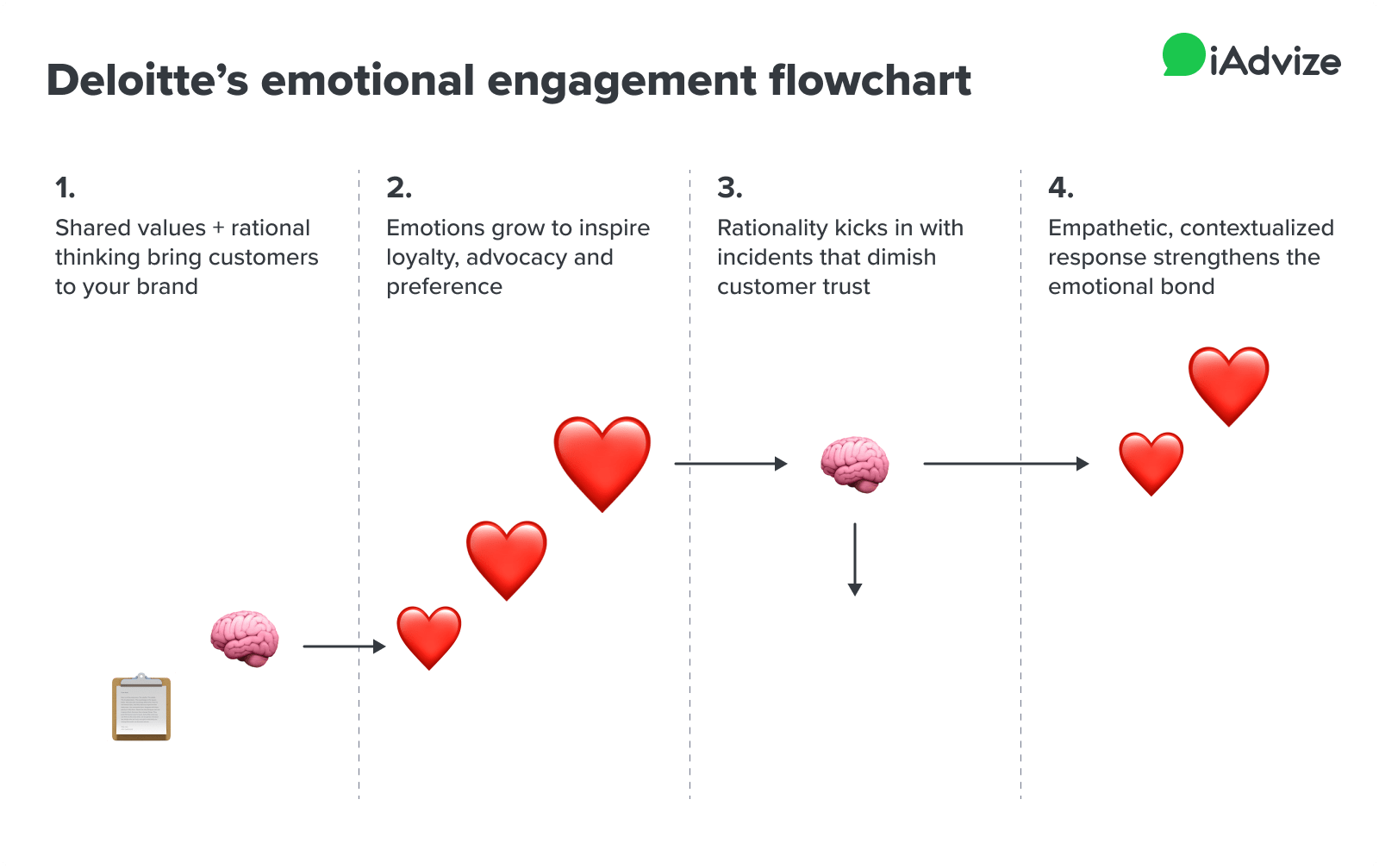
It's equally vital that you treat customers with empathy if something does go wrong. Bad experiences--like a defective product or ordering mistake--erode customer trust. But acting with care and a personalized response can rebuild customer trust.
The only way to get to the heart of customer emotions is through conversation. And a 1:1 dialog between humans is the key. No matter how far technology advances, interpreting emotions and delivering genuine empathy is something only a human being can do.
Recently, digital retail has gained massive ground. That's a bright spot for many retailers whose brick-and-mortar venues are seeing less foot traffic. As the shift towards digital continues, remember that shopping is a highly personal and emotional experience. Digital doesn't offer the same opportunities for face-to-face interaction that people value when shopping in a store.
But you can use conversation to add a human touch to your digital channel. Shoppers can access honest guidance on product selections--and have their feelings acknowledged. This approach can help shoppers walk away with positive sentiment instead of associating lingering feelings of doubt or confusion with your brand.
Change is present with all of us--every day. We're all looking for inspiration to stay positive and meaningful connections with others. And we want the best from the brands that we choose to patronize.
Business-as-usual isn't the answer. Instead, you need to focus on emotion and conversation. Your customers will remember every encounter they have with you. Make those interactions stand out by humanizing them. When you do, you can create small, positive moments that can add up to long-term customer loyalty and brand advocacy.

.png)
.png)



